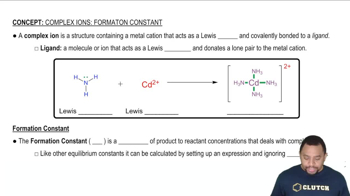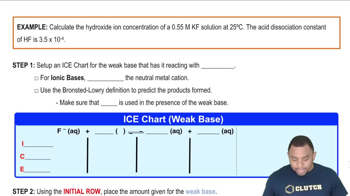Here are the essential concepts you must grasp in order to answer the question correctly.
Solubility Product Constant (Ksp)
The solubility product constant (Ksp) is an equilibrium constant that quantifies the solubility of a sparingly soluble ionic compound. It is defined as the product of the molar concentrations of the ions, each raised to the power of their coefficients in the balanced equation. For zinc hydroxide, Zn(OH)2, the Ksp value indicates how much of the compound can dissolve in water before reaching saturation, which is crucial for calculating its molar solubility.
Recommended video:
Solubility Product Constant
Complex Ion Formation
Complex ion formation occurs when a metal ion binds with one or more ligands, resulting in a charged species. In the case of Zn(OH)2, the formation of the complex ion [Zn(OH)4]2- in the presence of a strong base like NaOH significantly increases the solubility of zinc hydroxide. Understanding this concept is essential for determining how the presence of hydroxide ions affects the solubility of Zn(OH)2 in a basic solution.
Recommended video:
Complex Ions and Formation Constant
pH and Hydroxide Ion Concentration
pH is a measure of the acidity or basicity of a solution, defined as the negative logarithm of the hydrogen ion concentration. In the context of this question, calculating the pH involves understanding the relationship between hydroxide ion concentration and pH, particularly in a solution where Zn(OH)2 is dissolved. The pH can be derived from the concentration of hydroxide ions produced, which is relevant for both the solubility in pure water and in a basic solution.
Recommended video:
Hydroxide Ion Concentration Example




